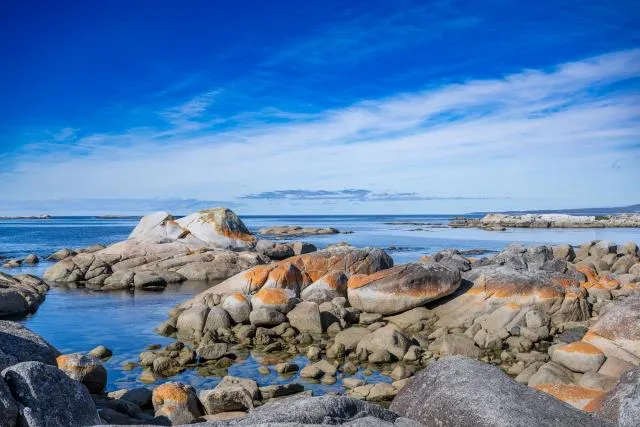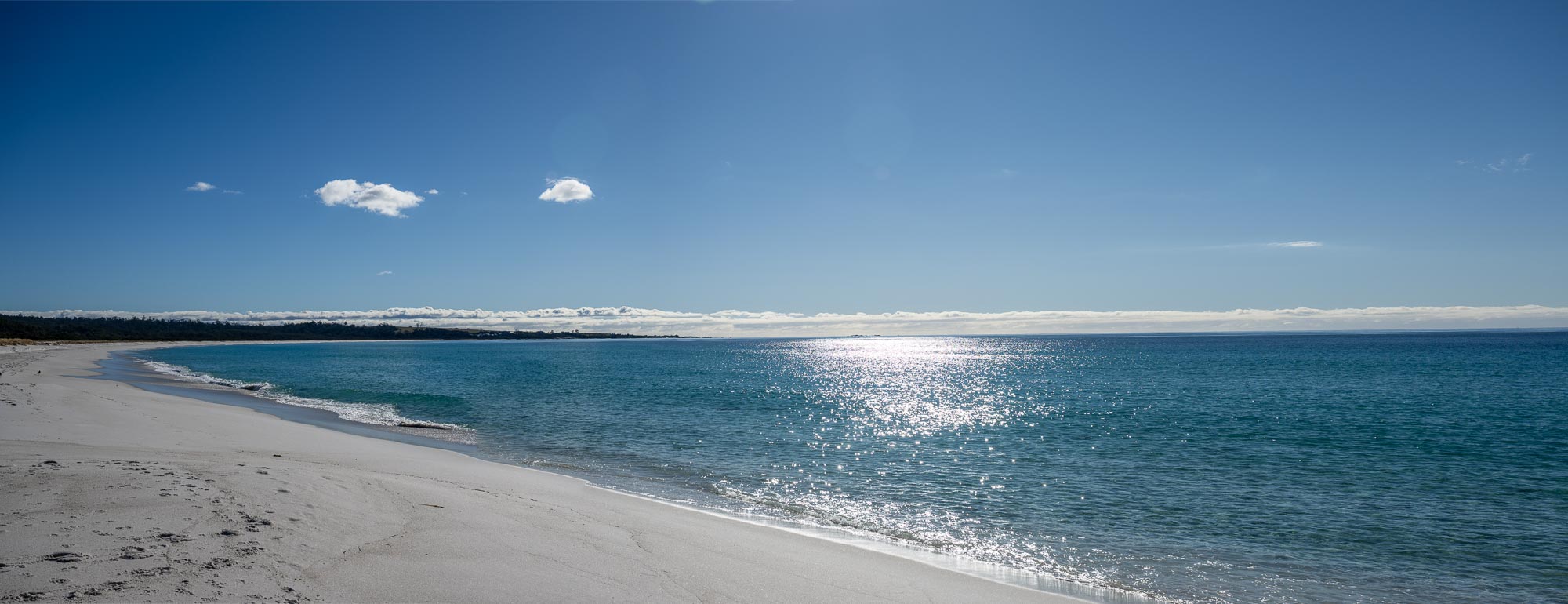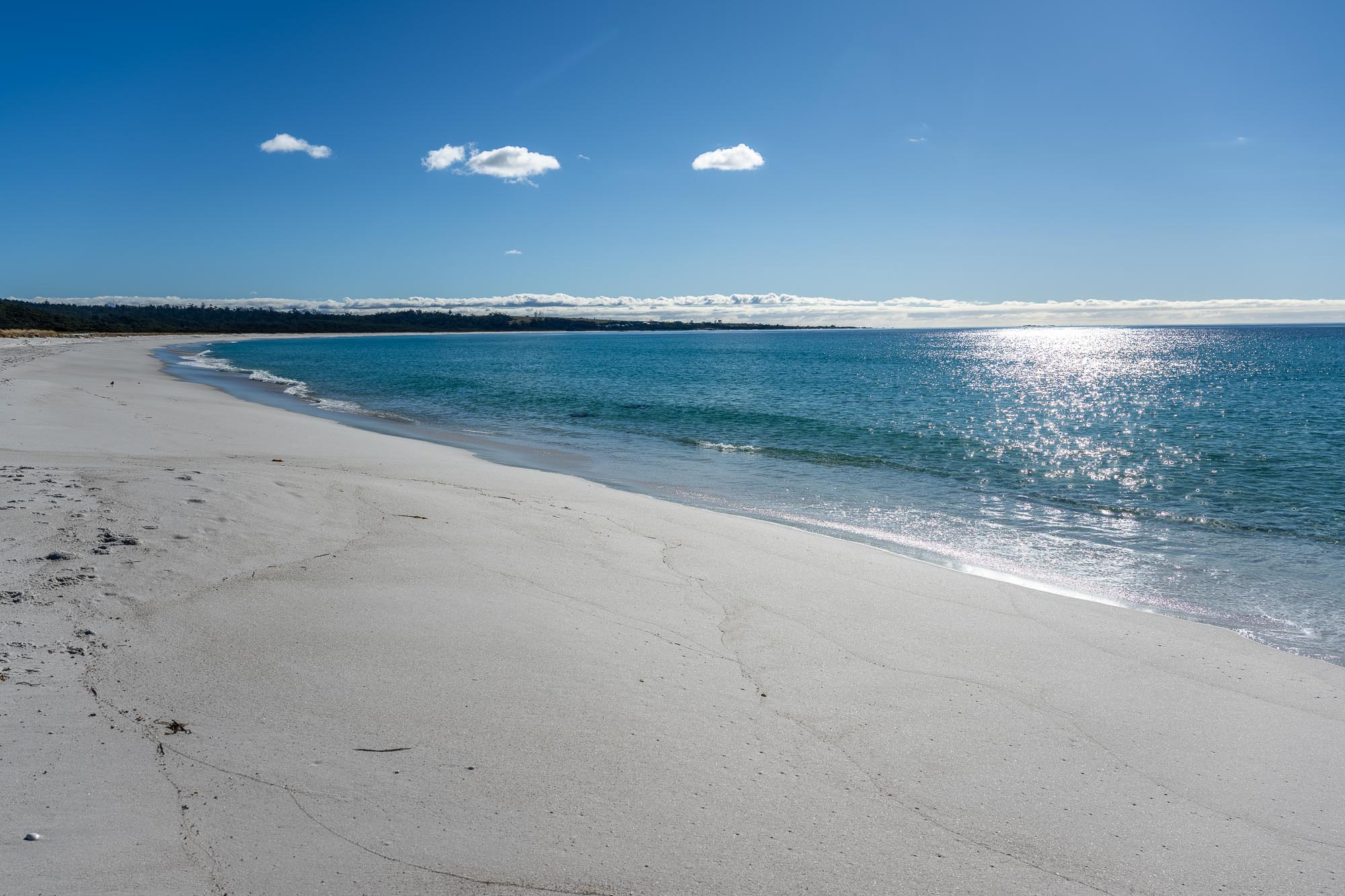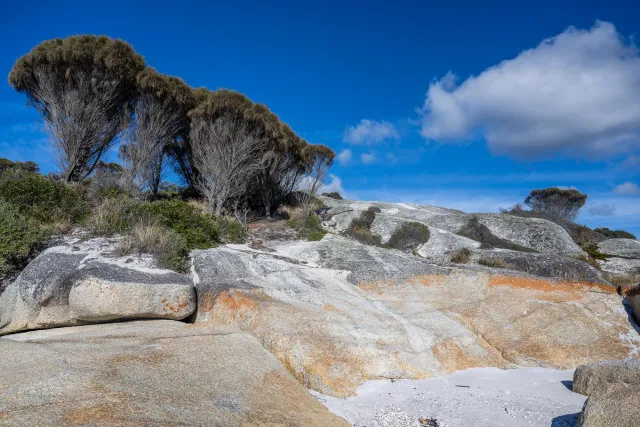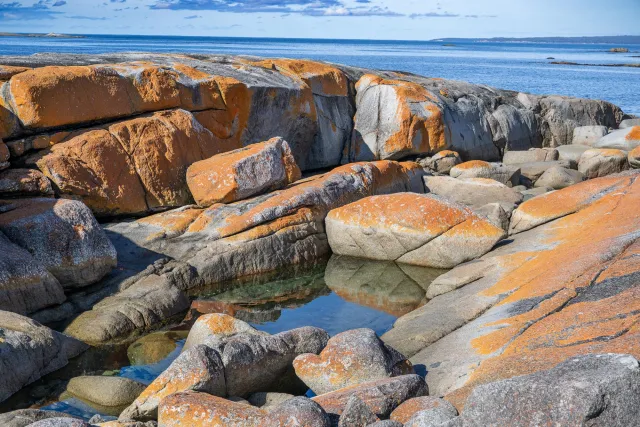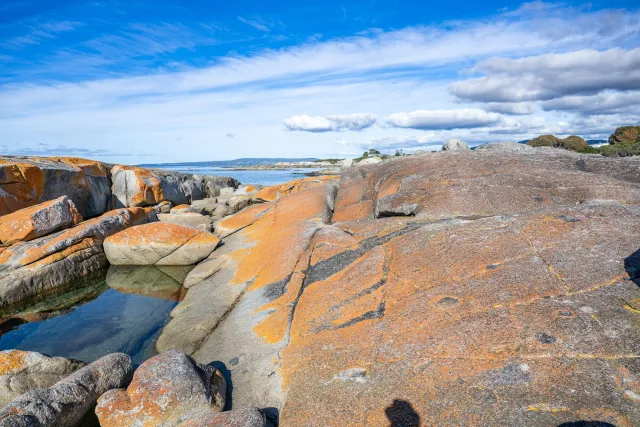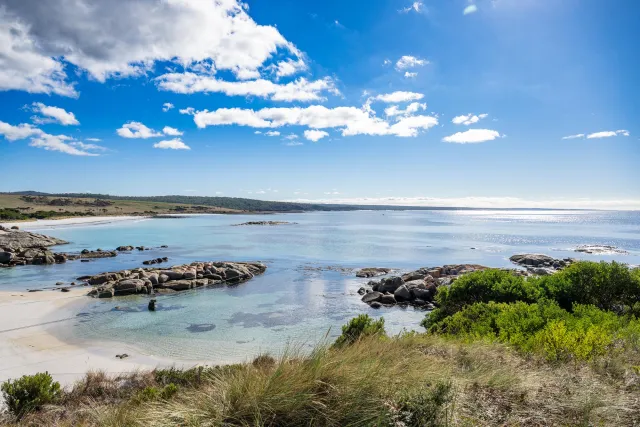In this article: Between Flames and Lichens – A Visit to the Bay of Fires
Leaving St. Helens behind, we followed nearly empty coastal roads towards “The Gardens” in Tasmania’s northeast. Dense jungle passages opened again and again to reveal wide, deserted beaches – brilliant white sand meeting turquoise sea under an impossibly blue sky. A Robinson Crusoe feeling emerged: remote, untouched, liberating.
Our first stop at Binalong Bay already hinted at the magic of the region. The beach seemed infinite, the sun casting golden dust across the sand. To the other side, massive granite boulders rose, some stained with vibrant red-orange patches – a prelude to the spectacle that awaited us just a few kilometers north at the Bay of Fires.
At the road’s end, we found a small parking area, just a few cars present. After a short walk, the landscape burst into fiery color: gigantic granite formations, coated with bright red lichens, rose from the white beach in dramatic fashion. The contrast was overwhelming – the “fires” of the Bay of Fires ignited not with flame, but with light, texture, and color. As we stepped across the sun-warmed rocks, it felt like walking on embers – a moment of elemental presence and stillness.
We returned to our Pelican Sanctuary full of impressions – the radiant coast, the red and grey stone, the sense of timelessness and awe.
🔬 Background: What is the Bay of Fires?
Stretching over 50 kilometers along Tasmania’s northeastern coast, from Binalong Bay in the south to Eddystone Point in the north, the Bay of Fires was named by British navigator Tobias Furneaux in 1773, after observing Aboriginal campfires along the shore. Today, however, the name is more often associated with the fiery red lichens that cover the granite boulders.
These lichens (Caloplaca species among others) thrive in harsh coastal environments and form a symbiotic relationship between fungi and algae. Combined with the white quartz sand and crystalline blue waters, the Bay of Fires has become one of Australia’s most breathtaking coastal landscapes – often listed among the world’s most beautiful beaches.
